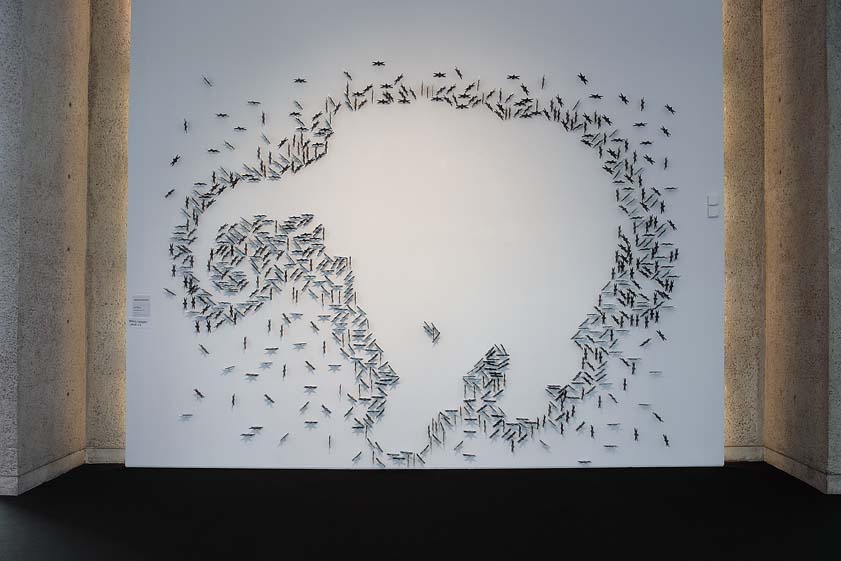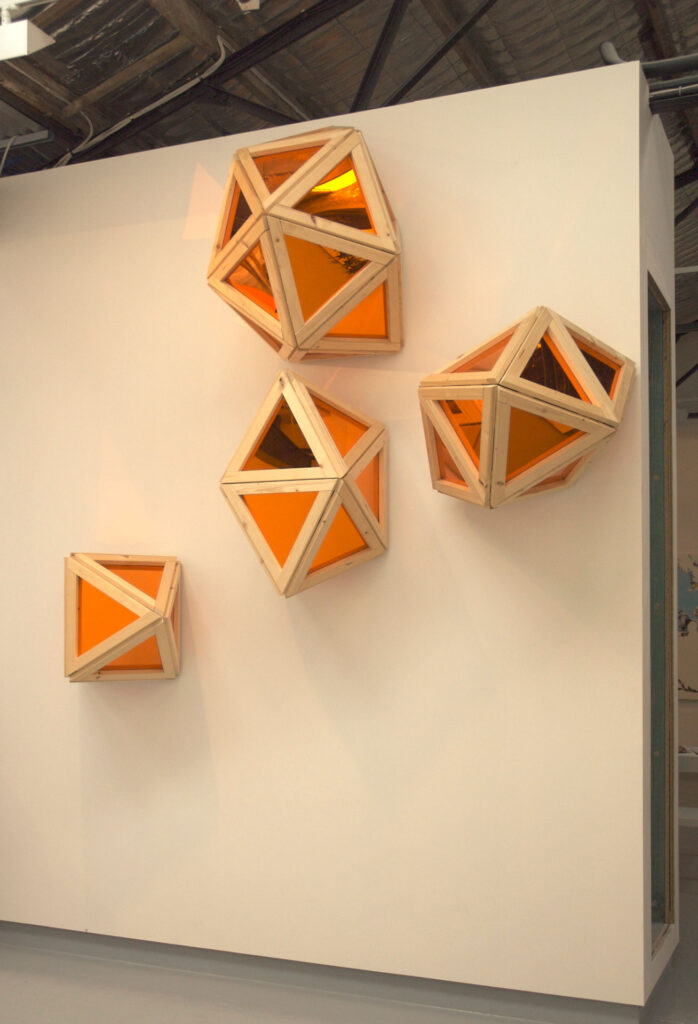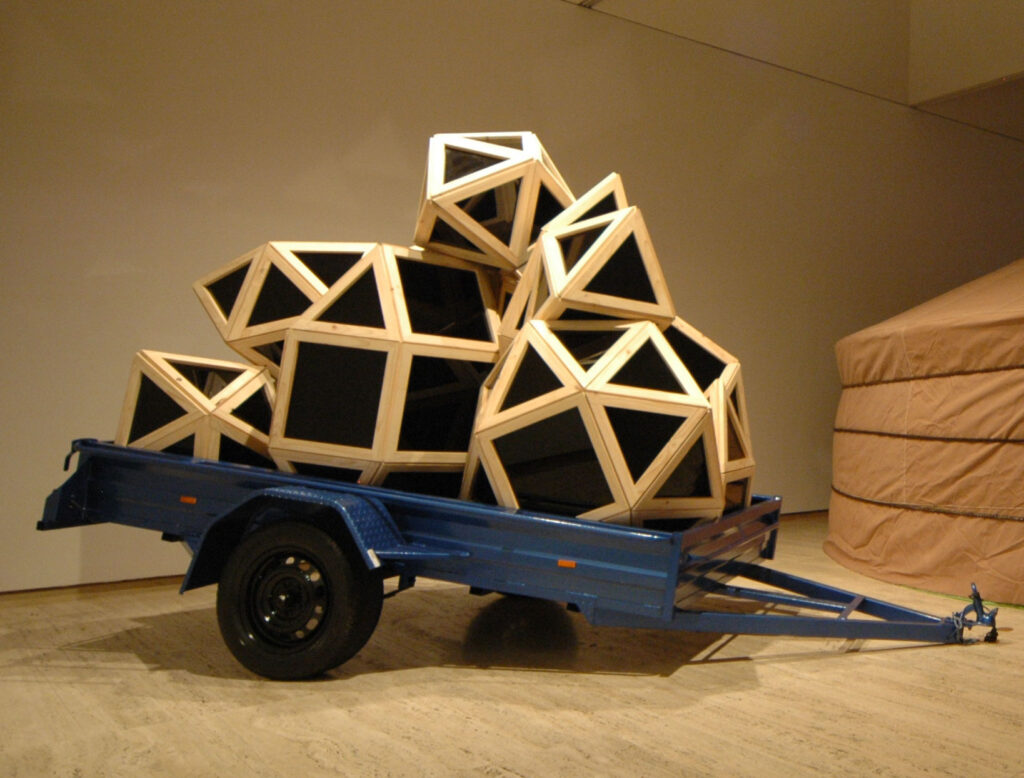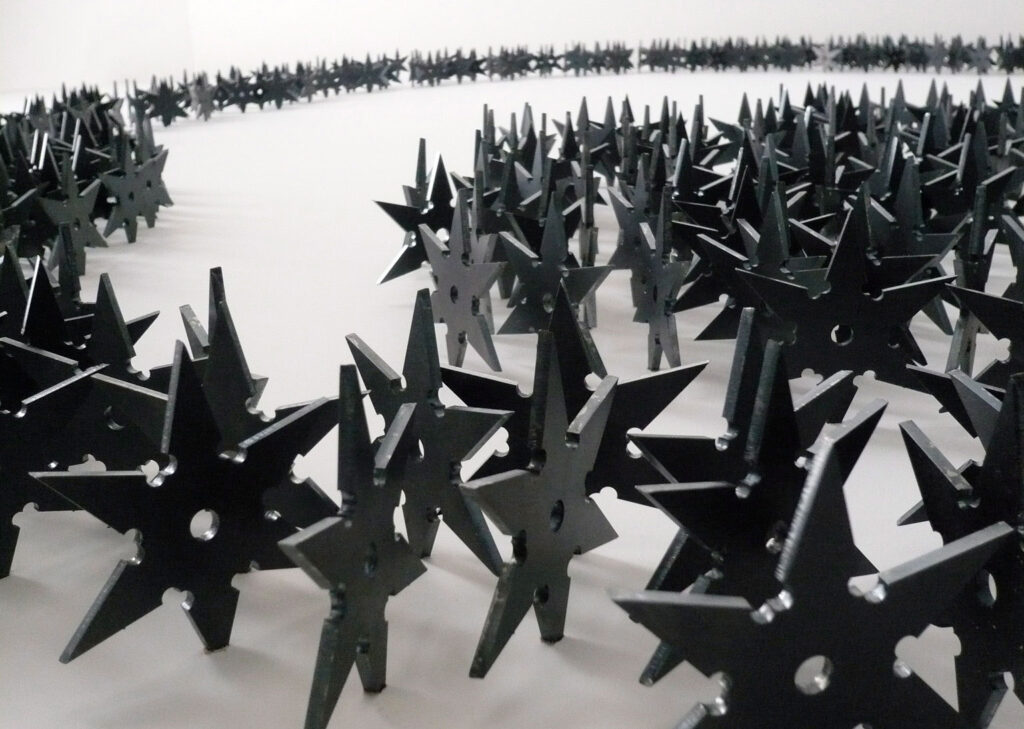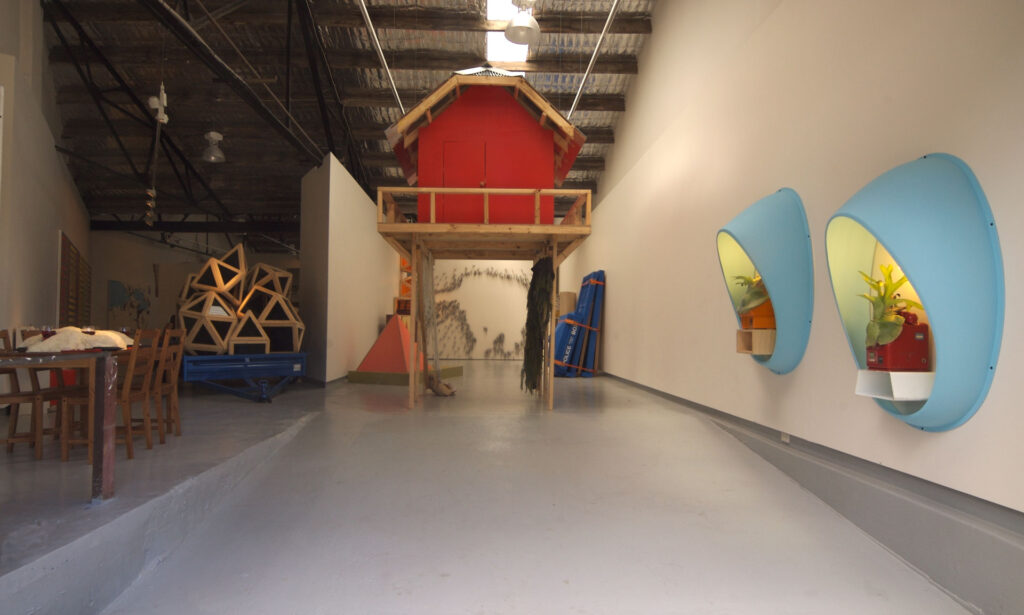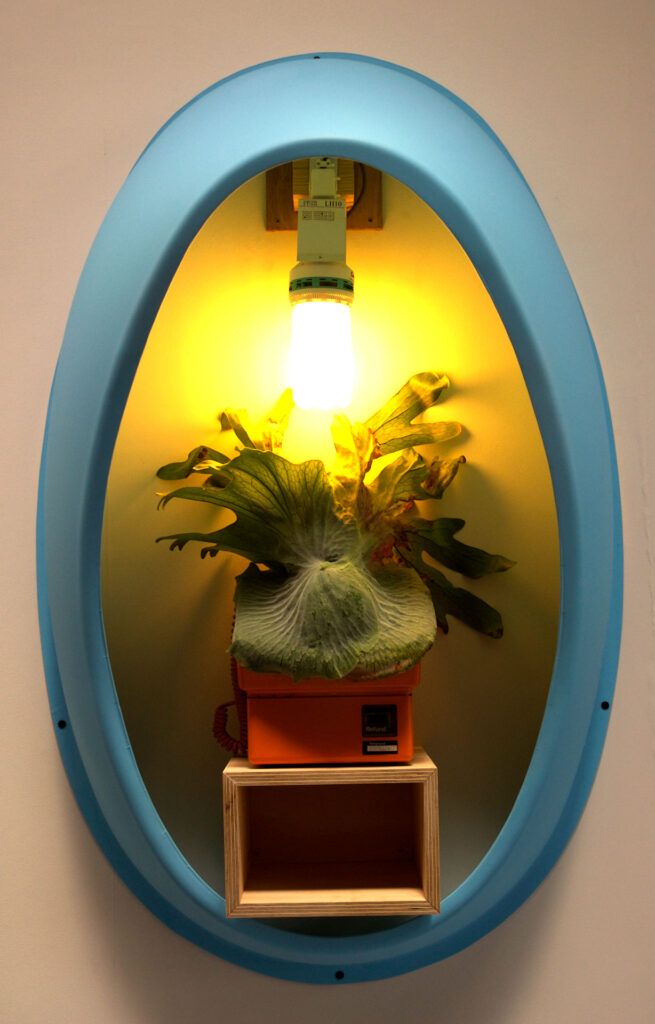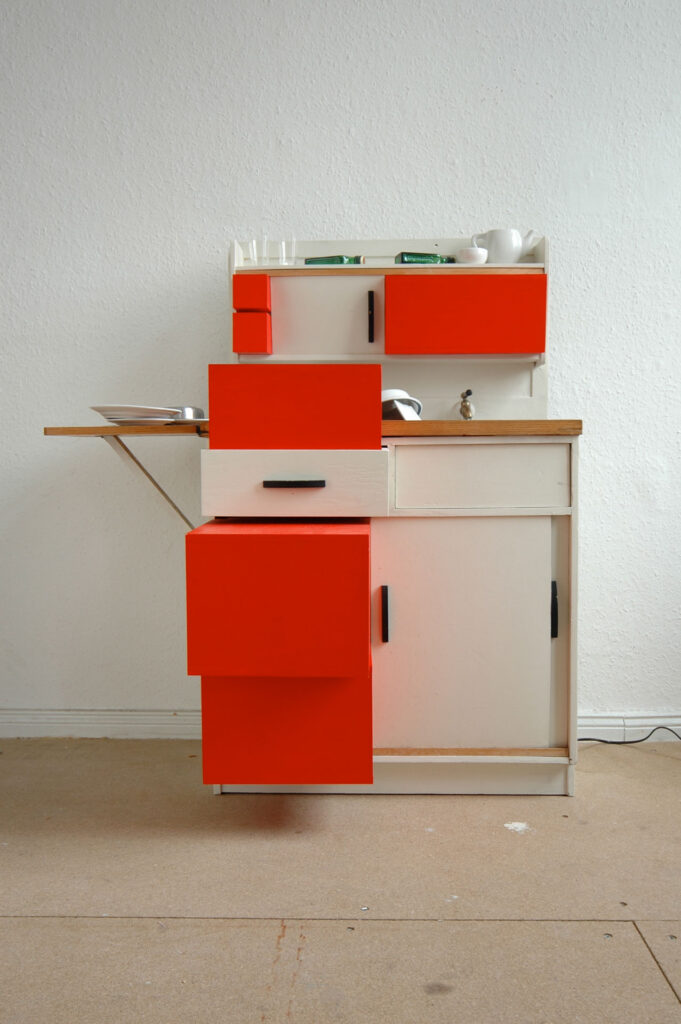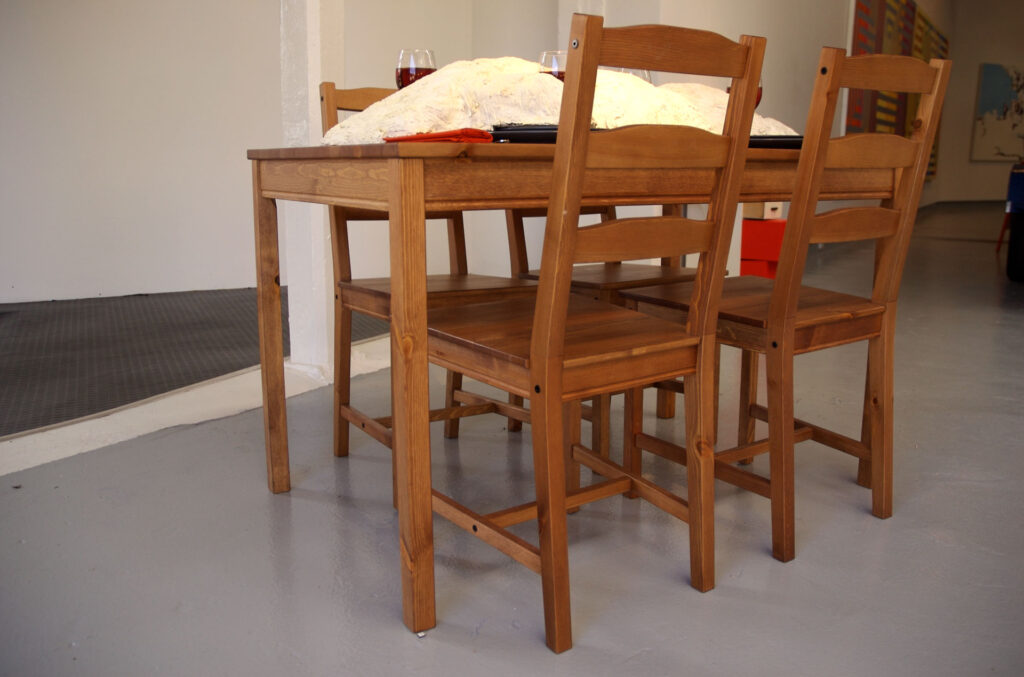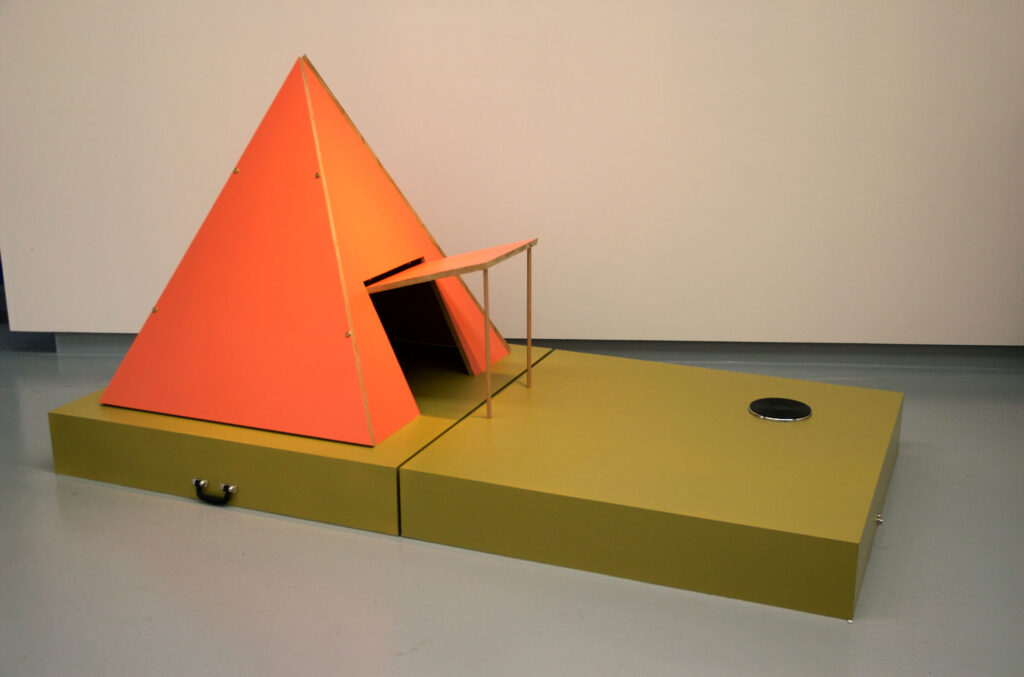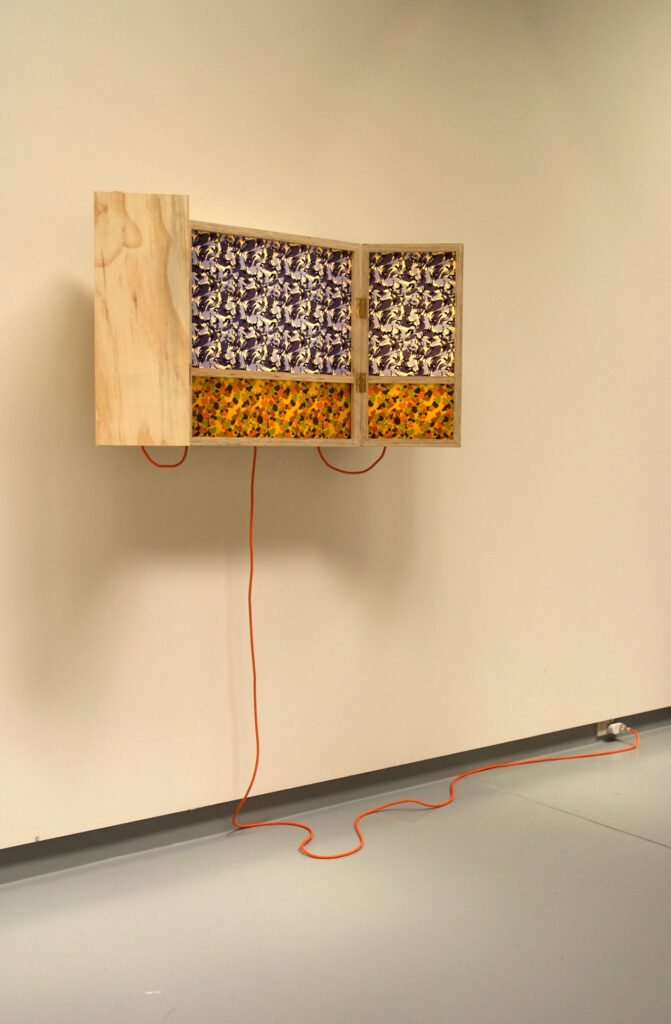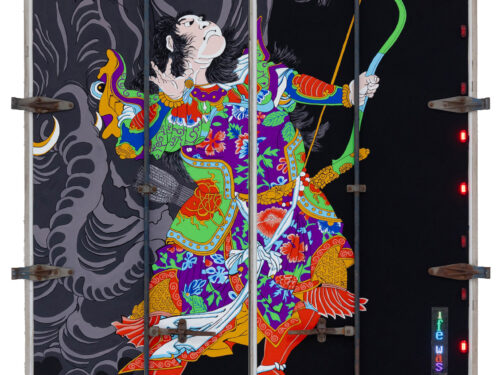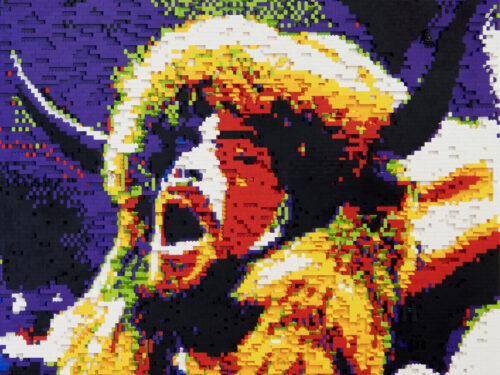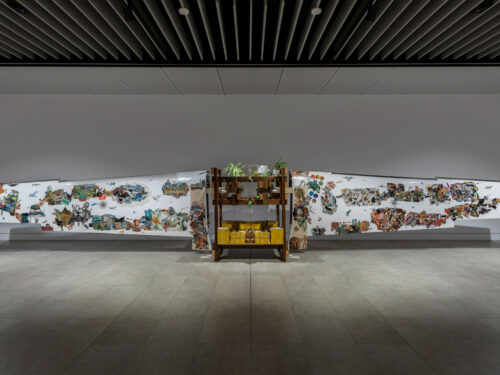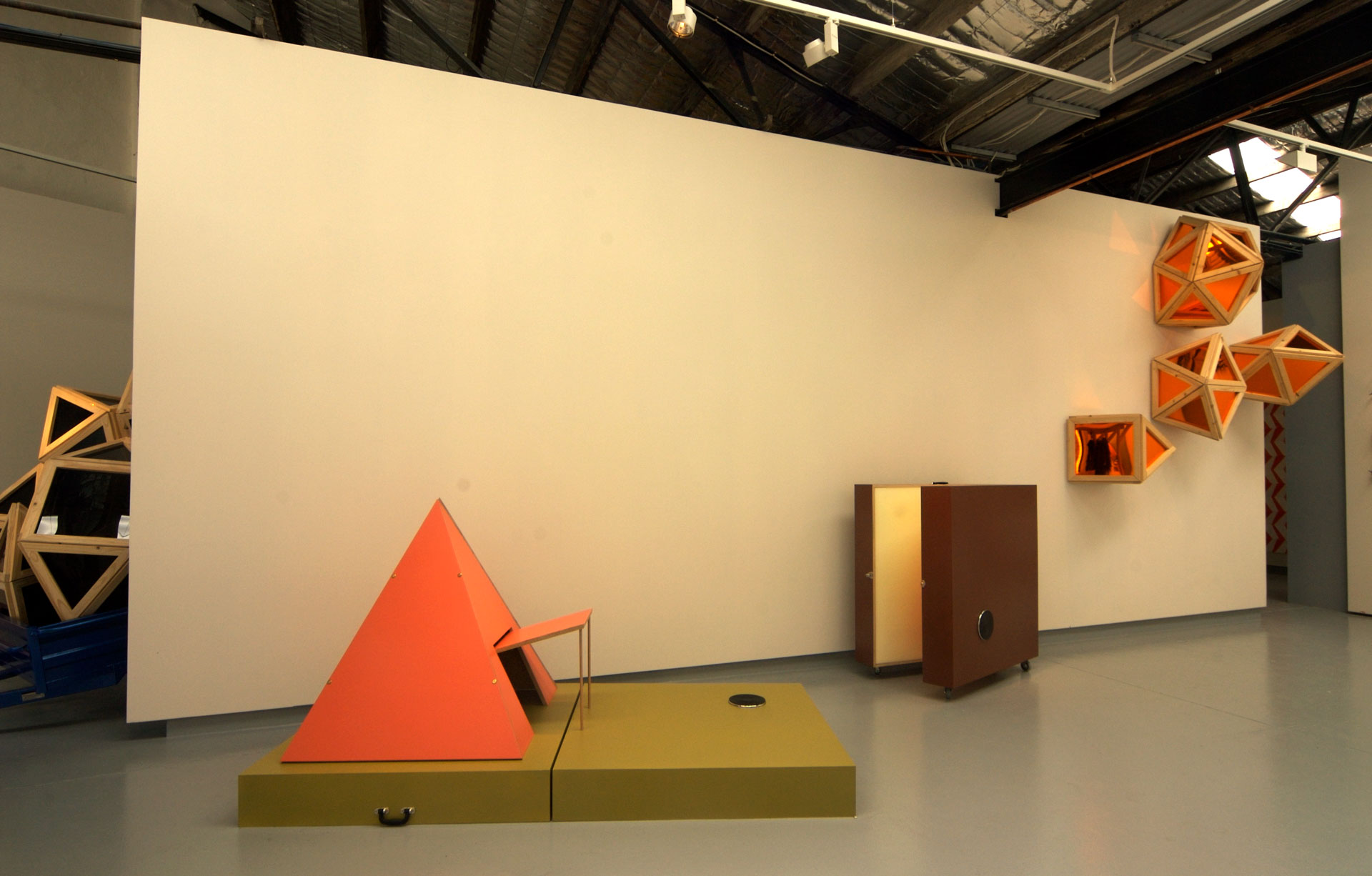
Disruptive Colouration:
White Elephant Stall
The tradition of the white elephant originates from India and South East Asia. It is reported that the mother of the Buddha was visited by a white elephant in a dream just before the birth of the Buddha. It is traditional for a white elephant to be presented to the king as a gift of great value and spiritual significance. The only problem with such a gift is although it is of extreme value, it is of no practical use and only consumes resources for no return.
Hence, the term White Elephant is used to describe any project or object that is costly and either does not yield the returns that were imagined or demands further funds to be funnelled into the project in order for it to be sustained. Examples of white elephants throughout history include the Spruce Goose, The Millennium Dome and Osaka Airport.
We have chosen to create a representation of a white elephant through the stencilling effect of arranging 700 ninja stars around the outline of a rampaging elephant. Ninja stars were originally found in the building structures of Japanese wooden houses. They were metal braces used to strengthen the junction of beams within internal architecture. These metallic crosses were adapted to be used as weapons by Ninja warriors. The ninjas used the throwing stars to escape during pursuit. The stars are not designed to be fatal, but serve as a way to slow down an enemy that is in chase without having to engage in close combat. The transition from stabilising architectural elements to flying weapons is one that keys in well with our ongoing investigation into the relationship between architecture and violence.
The decision to depict a white elephant through the use of ninja stars was made to represent our relationship to the ongoing global capitalist project. Without making any value judgments, the capitalist project is one that demands constant growth and expansion. Spanning the entire planet, the network of commerce makes us part of a system so vast and complex it is impossible to completely understand how we live and what exactly are the global consequences of the life choices we make.
White Elephant Stall is a physical manifestation of our anxiety in regard to the speed and vastness of the global world we find ourselves part of.
Once a Jolly Swagman
Our art making practice is directly informed by the way we live- moving from place to place, working with different people from different spaces.
We began collaborating on works in 2001 during the final years of our Masters in Fine Arts at the University of New South Wales. Bringing together ideas of home, permanency and collection, we create sculpture and installation works that reuse, reform and contain the everyday consumables and detritus of modern life.
We are based in Berlin and spend some of each year in Australia. Since first exhibiting at Artspace, Sydney, in 2003, we have lived and worked in various parts of the world, being awarded the Kunstlerhaus Bethanien Residency in Berlin, the Australia Council’s Tokyo residency.
Our work has been exhibited in venues such as the Art Gallery of New South Wales, Sydney, La BF15, Lyon and the Temporäre Kunsthalle Berlin. We co-represented Australia for the 53rd Venice Biennale and exhibited in Art Setouchi 2010 Japan.
The nomadic spirit still lives within the spirit of the contemporary art practitioner. Though to say that we are modern day swaggies would be pulling a longbow. But this is the launch-point of this work: a vision of a swagman straight out of a home interior decoration catalogue!
Republik
Our impetus to create the series ‘Republik’ was based upon our limited experience of the institution the Palast der Republik –the former GDR parliament house. The federal government’s decision to demolish the building was irreversibly made during our residency at the Kunstlerhaus Bethanien. Public attitudes toward the demolition of East Germany’s parliament house were wildly varied. Some believed that the building was an eyesore that represented a dark part of German history that was better forgotten; others believed that the building should be kept as a reminder of that history. One side wished to re-imagineer the original Prussian castle that existed on the site previously, while another party wanted to re-use the architecture of the Palast der Republik as an artistic institution, further complicating the argument.
The resolve to erase the building reminded us of past political actions such as the French revolution’s ‘year one’ or the more sinister Khmer Rouge’s ‘year zero’. This almost mathematical concept of a new beginning that completely destroys or replaces all that has come previously is of interest to us. It is quite obvious that such a clean break with the past is not really possible, no matter how strenuously one may try. Ironically the drive to re-create the Schloss that previously occupied the site is testament to the hold that history has on us.
The orange mirrored shapes that comprise the surfaces of the Johnson Solids, references the exterior of the demolished Palast der Republik. The simple shapes, created by combinations of equilateral triangles and squares allude to the rhizomic way that ideas grow and change; it is obvious that the communist project is dead, but is it buried? In a world that is based upon binary oppositions, how do we view ourselves in this “end of history” age?

